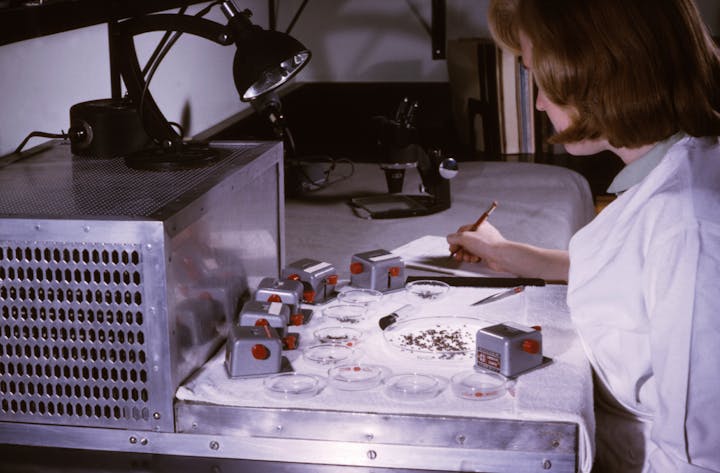Surveillance

Mosquito surveillance is the process of collecting mosquitoes in larval and adult forms to get an idea of the mosquito population size, reach and human disease risk. Surveillance is key to NFMAD fulfilling our mission of enhancing public health and comfort of those living in the North Fork Valley. Multiple surveillance methods exist for monitoring mosquitoes, this is because there is not a perfect surveillance method that captures all mosquito types. Different surveillance methods are used based on the type of mosquitoes in the environment as well as the potential health risks to the human population.
Larval Surveillance
This type of surveillance occurs in the field, with our field technicians. Inspections start in the early Spring and go through October. Field technicians are checking sites throughout the North Fork Valley, looking for locations which have the proper conditions for larvae to occur. They inspect by using a “dipper” which is a white one-pint cup attached to a handle. The “dipper” allows the technicians to get into the water source and determine if larvae is in the water. They are then able to treat the source in the best manner possible to decrease the larval mosquito potential.

Surveillance of mosquito populations is essential for assessing the necessity, location, timing and choice of appropriate control measures. It reduces the extent and duration of pesticide use, by restricting treatments to areas where mosquito populations exceed established thresholds.
Active Adult Surveillance
Is a large driving force of our program. It helps us know which species of mosquitoes are present as well as allowing us to collect mosquitoes for West Nile Virus testing. We start regularly trapping mosquitoes in May and continue through October. This surveillance is done by setting CDC- CO2 baited traps throughout the county. Traps are placed out overnight and are brought into the lab the next morning where the mosquitoes are identified, counted, and Ramp Tested for the West Nile Virus. Our turn around results are usually within 12 hours, but depending on situations can be up to 24 hours.
Passive Adult Surveillance
Is only possible with the help of the public. This type of surveillance is through those in the community who are reporting mosquito issues to us. These come in the form of service requests. These requests help us find locations where there can be mosquito problems in areas which are not always easily accessible by our field technicians.
Treating Sites
NFMAD uses a variety of larvicides and pupacides that are target-specific, killing the juvenile mosquito before it emerges as a flying and biting adult. The District uses larval and pupal products that increase in aggressiveness if trap counts do not drop, along with all other methods of observation and testing. If thresholds are reached, or there is a West Nile Virus positive in the trap pool, adulticides will be used in a targeted, focused manner, using calibrated and droplet-tested equipment.



